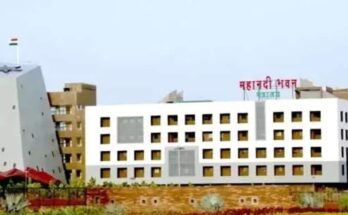Plants will be named after family members, eutrophic garden will be ready in the house
Korea became the first district of the state to take innovative initiatives to remove malnutrition
Nutrition level of children will be checked at monthly and plants at quarterly level
39 percent reduction in the number of malnourished children due to the Chief Minister’s nutrition campaign
Th The Koriya district of Chhattisgarh has become the first district in the state and possibly the country which has taken the initiative to use plants as a tool to remove malnutrition among children. Under this innovation, the names of munge and papaya plants being planted will be recorded in the nutrition card of malnourished children, and the nutritional data of these plants will also be recorded at regular intervals along with the growth of the child
The Koriya district of Chhattisgarh has become the first district in the state and possibly the country which has taken the initiative to use plants as a tool to remove malnutrition among children. Under this innovation, the names of munge and papaya plants being planted will be recorded in the nutrition card of malnourished children, and the nutritional data of these plants will also be recorded at regular intervals along with the growth of the child 
Anshika, a resident of Korea district of Chhattisgarh, is 03 years 09 months old, but her weight is only 10 kg 800 grams. Whereas according to doctors, the weight of girls of Anshika’s age should be from 14 to 16 kg. In fact, Anshika is malnourished and her parents were worried about how their daughter’s nutritional status would increase.
Korea district administration has started a unique initiative so that Anshika and her family do not feel that their daughter is ill or her development is not happening properly. Papaya and munge have been planted in Anshika’s house itself. These plants are named after the members of the family so that these plants become members of the family and they are taken care of along with the child.
The special thing is that the details of these plants have also been included in the nutrition card made for Anshika and along with the nutritional change of Anshika, information about the change of these plants will be filled in this card simultaneously. Korea district is the first district of Chhattisgarh and possibly the first district in the country where along with the malnourished child, nutrition cards are being made for the plants planted in his house. In one part of the nutrition card, the information of the plant will be recorded and in the other part the information of the malnourished child will be recorded.
In order to reduce the rate of malnutrition in Koriya district of Chhattisgarh, work is being started to prepare Suposhan Bari. Under this, munga and papaya plants are being planted in all the development blocks of the district in the homes of children who are under the category of malnutrition, who will be named as members of the child’s family and along with the malnourished child, the nutritional level of these plants also will be checked regularly.
This innovative initiative has been started from Odagi Gram Panchayat of Koriya district. Parliamentary Secretary Mrs. Ambika Singhdeo and District Collector Mr. Kuldeep Sharma themselves started this by planting papaya and munga saplings in the house of Anshika, a girl who was registered under the category of malnutrition. Munga and papaya plants are considered to be very beneficial in terms of increasing the nutritional level, in view of their benefits, the decision to plant them has been taken by the district administration. In this way, along with the development of the malnourished child, the plant will also develop and the eutrophic garden will also be ready at home.
According to National Family Survey-4, 37.7 percent children below 5 years of age were malnourished in the state. After the launch of Mukhyamantri Suposhan Abhiyan Yojna by Chief Minister Bhupesh Baghel, so far about 1 lakh 72 thousand children in the state have become malnutrition free and the number of malnourished children has come down by 39 percent. According to National Family Survey-5 also the percentage of malnourished children in the state has come down to 31.30 which is less than the national average of 32.10 percent.




